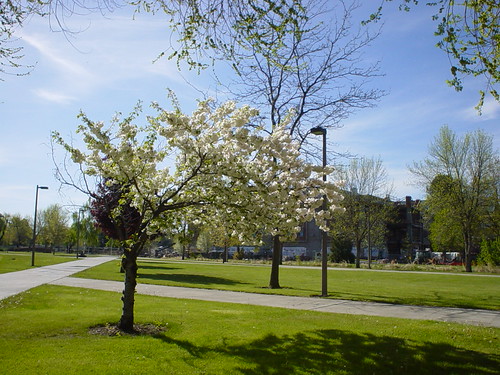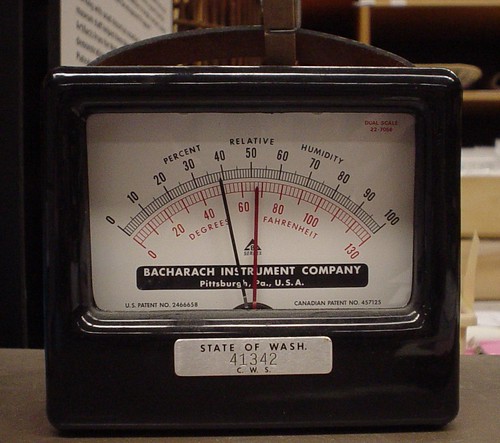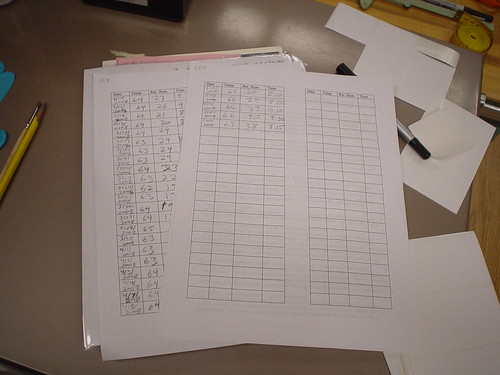
It still looks a bit like spring outside.

Okay, but what does this wonderful turn in the weather have to do with collections management, since that's why we're all here? Well, let me tell you! So the point of collections management is to maintain and protect collections from deterioration. One thing which causes the deterioration of collections is environmental conditions. That is, things stored at the wrong temperature or at the wrong relative humidity can deteriorate faster - just imagine what would happen if you stored your books in the bathroom, with all that water in the air. They'd wrinkle and crease, and maybe start growing mold. So you can see why it's important to keep an eye on the environmental conditions.
Our storerooms have dial thermohygrometers which indicate both the temperature and the relative humidity.

When we move to the new building, I will be using a very popular digital device called a datalogger which will perform the same function, but at a high degree of accuracy and consistency (I'll admit, sometimes I miss a day here and there, not to mention weekends.)
And to keep track of changes, I take down the reading every weekday morning. In this way I can keep track of trends over time.

It's not rocket science, it's not even fancy, but from these readings, I can generate excel charts showing the change over time, like this one from last October for relative humidity:

You'll see on that chart a relatively sudden drop in relative humidity(RH) - in about 2 days it drops 15%. That means the air got a lot drier pretty quickly. When changes happen suddenly like that it can put a lot of stress on sensitive objects, causing cracks, pieces falling off, and invisible damage that will accumulate over time.
This subject is of special interest right now because this week I saw a jump of about 15% in RH in a couple of days. I also found a document in the files from the 1970s, when the building the collections are in now was being built. It indicated that the entire building was environmentally controlled and would have a building wide RH of 45-55% (a standard 'normal' setting). But my tracking has shown that this environmental control has faltered somewhat over the years - RH in one storeroom spent much of the winter under 20%.
So what does this all mean? It means that our storage rooms have less than optimal environmental conditions. What can I do about this? Not a whole lot, really. I can monitor it, be aware that this may cause condition problems for some of our objects, and make plans to improve things in the future.
And I can spend some time in the sun this summery weekend, enjoying the natural environmental conditions.
No comments:
Post a Comment